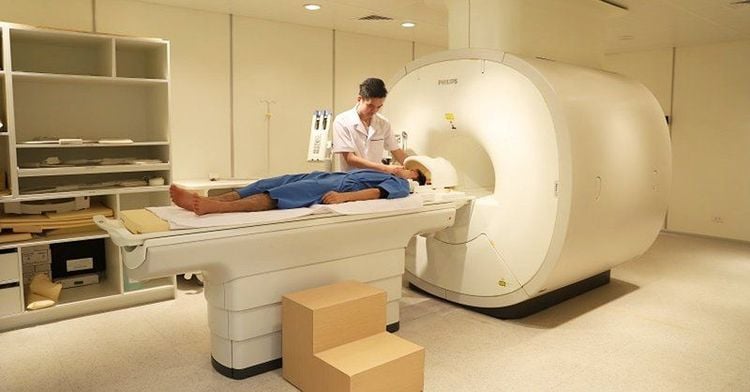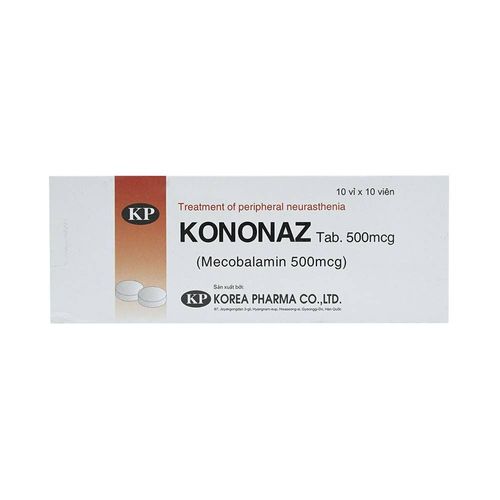This is an automatically translated article.
Article by Doctor Do Phuoc Huy - Genetic Consultant Doctor - Vinmec Institute of Stem Cell and Gene TechnologyParry-Romberg syndrome, also known as progressive facial atrophy, is a rare condition characterized by progressive shrinkage and degeneration (progressive atrophy) of the tissues beneath the skin. This usually affects only one side of the face, but it can sometimes affect other parts of the body.
1. Causes and risk factors for parry-romberg syndrome
Parry-romberg syndrome can affect up to 1/250,000 people in the general population. There seems to be a higher prevalence in females, age of onset is 5-15 years, and is usually left-sided.The exact cause of this acquired disorder is unknown. Autoimmune (an abnormal response of the body against itself) is suspected and the syndrome may be a variant of focal scleroderma, but most cases appear to be random. genetic factors have not been identified). Some other theories such as trauma, vasculitis, neuritis, ... are also risk factors leading to parry romberg syndrome.
2. Symptoms and classification
Symptoms, progression, and severity vary widely from person to person and range from mild to severe. People who are sick sometimes don't have all of the symptoms.The characteristic symptom of romberg syndrome is thinning or shrinking (atrophy) of various tissues of the face including fat, skin, connective tissues, muscles and in some cases bone. The extent and progression of atrophy can vary widely.
Neurological abnormalities are common. About 45% of people also have trigeminal neuralgia (severe pain in the tissues of the forehead, eyes, cheeks, nose, mouth, and jaw) or migraines (severe headaches that may be accompanied by visual abnormalities, nausea and vomiting). About 10% of people affected develop seizures as part of the disease.
The tissues of the mouth, including the tongue, gums, teeth, and soft palate are often involved. 50% of affected people develop oral abnormalities such as delayed teething or root decay. 35% have difficulty or inability to open their mouth normally or other jaw symptoms.
Other common findings include ptosis, miosis, conjunctival redness, and decreased sweating on the affected side of the face.
3. Diagnosis and examination of parry-romberg syndrome
The diagnosis of parry-romberg syndrome is made based on identification of characteristic symptoms, patient history, thorough clinical evaluation, and a variety of specialized tests.The specific tests used depend on which symptoms are present and which occur first. Tests include:
Computed tomography (CT) and magnetic resonance imaging (MRI) can be used to see the deep tissue that has been affected. Genetic testing or other genetic tests are often inconclusive.

Người bệnh có thể được chỉ định chụp CT để chẩn đoán hội chứng parry-romberg
4. Treatment and care of people with parry-romberg syndrome
There is no cure or method to stop the progression of parry-romberg syndrome. Treatment may require the concerted effort of a team of specialists, such as pediatricians, orthopedists, surgeons (especially plastic surgeons), dentists, ophthalmologists, and ophthalmologists. physicians, dermatologists, neurologists, and other health care professionals.Some drugs are now thought to be able to assist in treatment such as methotrexate , corticosteroids, cyclophosphamide and azathioprine . No randomized controlled trials have been performed to evaluate such treatments, so benefit has not been clearly established.
A variety of surgical techniques have been used to improve cosmetic appearance in affected individuals. The success rates of these surgical options vary widely. Surgical treatment is usually not recommended until the atrophy has ended and caused facial disfigurement.
Surgical techniques include fat injection, skin flap grafting or bone grafting. These procedures can be effective in improving aesthetics.
In summary, the prognosis for people with Parry-Romberg syndrome will vary. In some cases, the atrophy ends before the entire face is affected. In mild cases, the disorder usually causes no disability other than cosmetic effects.
Please dial HOTLINE for more information or register for an appointment HERE. Download MyVinmec app to make appointments faster and to manage your bookings easily.
Reference source: texaschildrens.org












